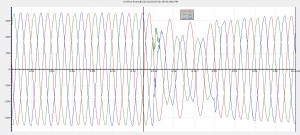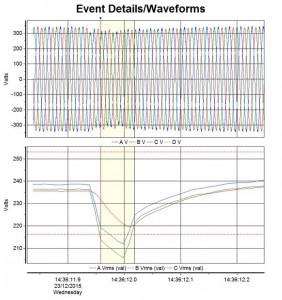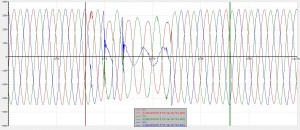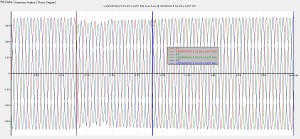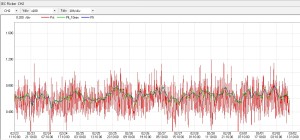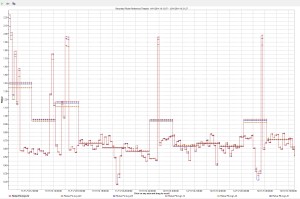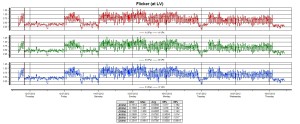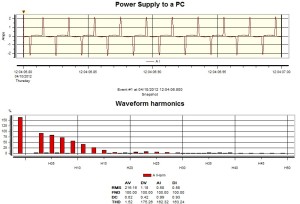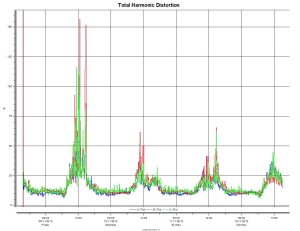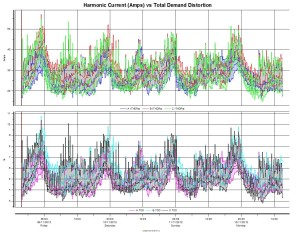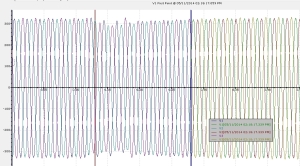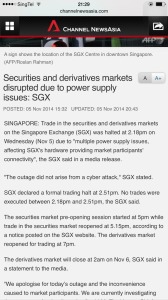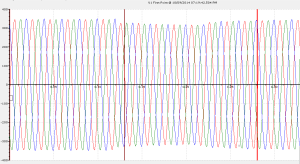Earlier this afternoon in the midst of the year-end festive mood, you might have seen your office lights flickered twice in an hour: two transmission-level faults occurred. Tell-tale signs were from the nature of the waveforms and that in general, everyone in Singapore ‘felt’ it, with 1/4 of the island getting the ‘worst-magnitudes’.
One at around 1:46pm and the other at 2:36 PM. The following were captured from an office in Jurong East and in Bedok area (at low voltage).
At 1:46PM, it can be seen that the dips were fairly shallow. Hence it can be deduced that the origin of the fault were neither in the 230kV blocks that these two sites are located. From the RMS trend of the waveforms captured at Site 2, it can be inferred that it was likely a single-phase 230kV fault on Phase L1 (Red).
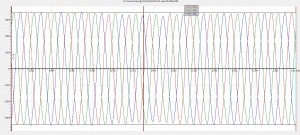
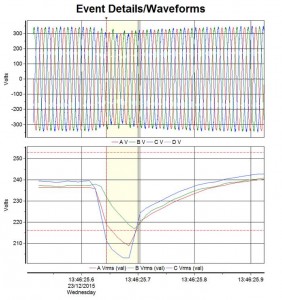
At 2:36PM, the dips were much more pronounced at Site 1, suggesting that it resides in the same 230kV block as the fault. Here it is very clear that the 230kV fault was on the Phase L3 (Blue). At the second site at Bedok, the dips were again shallow. These are characteristics of a 230kV transmission level fault in Singapore. Only 1/4 of the island will be most affected with dip magnitudes in the range of 40 to 50% (dip by).
